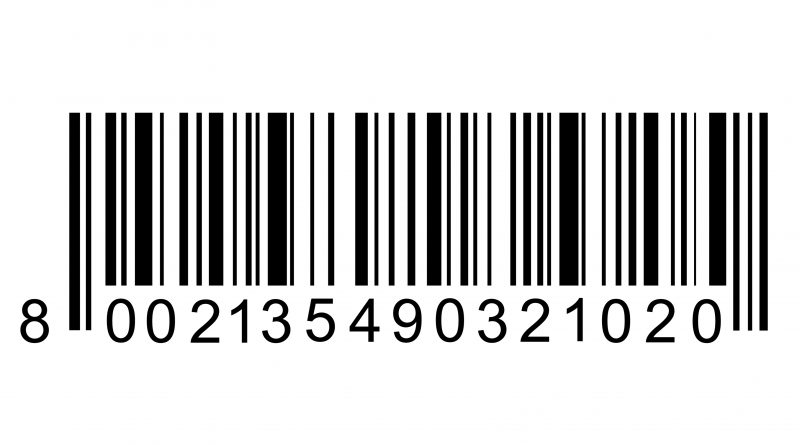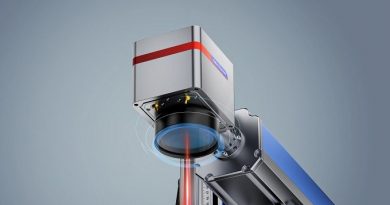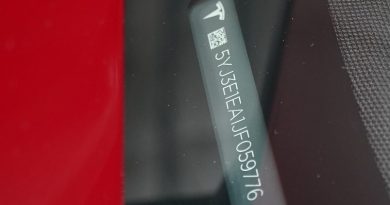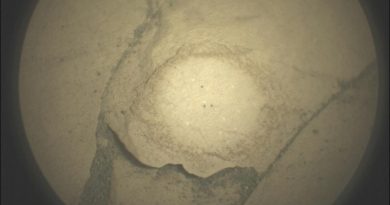History of the Barcode Scanner
It may be hard to remember for some, but there was a time when barcodes, (also known as UPC codes), and barcode scanners were considered future technology. It wasn’t until 1952 when the first bar code patent was issued, and it consisted of a bull’s eye symbol comprised of a series of concentric circles. What follows is a summary of the history of the barcode scanner.
Before this time, there was no real automated monitoring system, and tasks such as checking out groceries at the store or counting inventory were completed manually. Oftentimes this was not only time-consuming and laborious, but also inaccurate. It wasn’t until the 1970s when barcodes and barcode scanners first made their appearance in the public sector and revolutionized the retail industry and distribution.
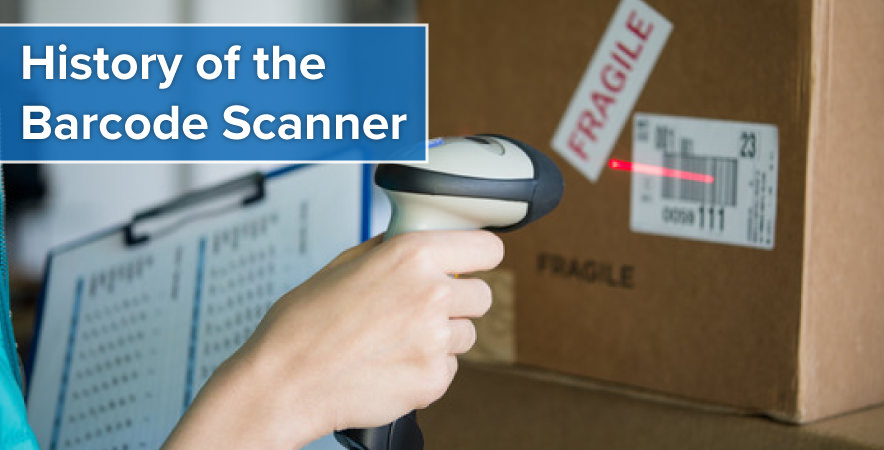
Who Invented Barcodes and Barcode Readers?
Barcodes wouldn’t be any good if you didn’t have scanners to read the data. That’s why when barcodes were first introduced, researchers developed a reader as well. Back in the latter part of the 1940s, a Philadelphia grocery store chain asked researchers at Drexel Institute of Technology to look into developing a method to read product information automatically during checkout. Drexel teacher Norman Joseph Woodland went to work on a solution. For two years, he experimented with many different data collection techniques until he found one that worked. The first barcode invented used Morse code, and Woodland wrote out the dots and dashes that represented the product number and extended the lines of each symbol vertically, making the linear code. To read this barcode, Woodward made a device adapted from the Lee de Forest movie sound system. It was developed in the 1930s and used a sensitive tube to help detect the movie projector’s light as it shines through the side of film. With films, the light detected is converted into sound. Woodward’s scanner converted the reflected light into numbers. That’s how the barcode scanner was invented.
Woodward applied for a patent for the modern-day barcode and barcode scanner in 1949, and it was approved three years later. While IBM was interested in purchasing this patent, it wasn’t until 1962, when Philadelphia Storage Battery Co. (Philco), a pioneer in television, radio and battery production, purchased it, making it the first barcode manufacturer. A few years later, that company sold it to RCA.
When Did Grocery Stores Start Using Barcodes and Barcode Scanners?
Long before Woodward devised a way to read barcodes, grocers knew they needed a way to keep track of the thousands of items coming in and going out of their shops daily. As stores grew larger, the problem of keeping track of inventory also got bigger. Punch cards, which were originally developed for the 1890 U.S. Census, offered a glimmer of hope for grocers. However, the card-reading equipment was bulky and expensive, and with the country in the middle of the Great Depression, it just wasn’t feasible.

However, in the summer of 1974, three supermarkets first used scanners for barcodes:
- In June 1974, Marsh Supermarket in Troy, Ohio, installed a prototype system. The very first barcode-scanned item was a 10-pack of Juicy Fruit gum.
- A month later, production scanning systems were installed at a Steinberg’s grocery store in Montreal, Canada, and a Pathmark store in South Plainfield, N.J.
These accomplishments were the culmination of three long years of work by the grocery industry to create a Universal Product Code (UPC) that eventually would turn into the modern-day Point of Sale (POS) systems. After a trial period, the benefits of using this type of barcode system included:
- Checkout productivity increased.
- Stores reduced service desk hours because checks could be cashed at the register, and also because cigarettes were being sold at the register, since the store had a system in place to monitor inventory.
- Bookkeeping hours decreased because counting coupons and other tasks were done by the system.
- Stores installed electronic scales at the register, speeding up the weighing and pricing of produce.
- Customer acceptance was positive.
Timeline of Barcodes and Barcode Scanners
To really get a feel for what the future holds for barcodes and barcode readers, you need to look at how far this technology has really come. This type of data collection technology actually dates back to the 19th century, when the concept of collecting information through a machine was first discussed. Other highlights in the brief history of barcodes and barcode scanners include:
- 1890: Punch cards are used to help during that year’s Census.
- 1930 to 1940: The concept of a linear bar code is first discussed and developed
- 1948: Two college students, Bernard Silver and Joseph Woodland, overhear a request made to the head of their school while attending a food fair.
- 1949: Woodland and Silver file for a patent.
- 1952: Both the barcode and the barcode scanner receive patents, later purchased by Philco and sold to RCA, an American electronics company.
- 1962: Silver passes away at age 38, before the commercialization of the barcode and barcode scanner.
- 1966: The National Association of Food Chains becomes the first company to utilize barcodes, using them to decrease checkout times.
- 1967: Just a year later, the Association of American Railroads adopts the barcode and barcode scanner and uses it on its whole fleet of equipment.
- 1969: Computer Identics Corp. becomes the first company whose entire line of products use barcode technology.
- 1973: A committee called the Uniform Grocery Product Code recommends barcode technology should be used on all products throughout the United States.
- 1974: Dr. David Allais creates Code 39, the first alphanumeric barcode.
- 1982: Normand at Scan Tech in Dallas, Texas, introduces the first CCD scanner.
- 1988: Intermec Corp. creates the first 2D barcode.
- 1994: The first barcode software is invented for mobile computing. The QR code is also introduced by the Denso Wave Co. to track the auto manufacturing process.
- 1999: Japanese Industrial Standards registers QR codes.
- 2005: Airlines introduce barcodes on boarding passes and use various upgrades throughout the years.
- Today: QR codes are used almost everywhere, including websites, decorative items and signs.
Introduction of the QR Code
In 1994, about 20 years after the initial barcode scanners were introduced, it became apparent you would have limitations using them. The most significant was that a barcode scanner could only read the 20 alphanumeric characters a barcode could hold. Denso Wave Inc. embarked on developing a new 2D code to handle users’ needs.

Called Quick Response (QR) codes, they can be scanned digitally, most commonly by a smartphone. The phone’s image sensor reads the code, and then it is interpreted by the system’s processor. It is made up of four squares, with the first three larger ones acting as alignment targets, while the smaller square normalizes the angle and size of the shot. The encoded data is interpreted by one of the four primary modes, although other forms of information can also be shown if your scanner has the appropriate extensions:
- Alphanumeric
- Numeric
- Binary/Byte
- Kanji
As its technology evolved, QR scanners became able to read more information, including up to 177 pixels square that held about 1,852 characters. Today, similar to the purpose of barcodes, QR codes are scanned in just about every possible situation, including online ticketing, inventory tracking, logistics and shipping. You can find them on fliers from bands who want you to watch their concerts online.
Companies also use them to put Google Maps addresses and directions on business cards. Some even contain the code to automatically load a web page or send an email or text to a company’s hot line.
The rate of scanning QR codes has increase by more than one third in the last few years. Advertisers love that users can use their smartphones to read a code in a magazine or on a subway ad or poster. It’s one of the easiest connections advertisers can have with consumers.

Other Types of Barcode Scanners
Today’s technology has paved the way for various types of barcode reader innovations, including QR scanners, that include readers of different sizes, uses and costs. They serve a wide range of financial and organizational applications, and are used to price retail items, perform organizational and logistical services, keep track of shipments and manage financial documents. To decide which one you need, you need to take these factors into consideration:
- Training level or capability of the user
- Environment in which the scanning will be done.
- Quality of the barcodes being scanned and likeness to other barcodes.
- Type of host computer being used, whether it is a desktop or hand-held device, and if it’s in a fixed or portable position.
- Necessary volume or throughput of scans required.
There are at least four styles of barcode scanners on the market today, that vary between their methods of output. They include:
Wand/Pen
These barcode readers are small like a pen or wand and have a photodiode and LED light on their tips. The user waves the tip of the wand/pen over the barcode, where the black and white bars are illuminated by the LED light. The photodiode measures the light’s reflection, and the information is transmitted to the host for processing.
2D Camera
Some barcodes do not contain white and black bars, but more like black and white spaces in a 2D, (or two-dimensional), target. They cannot be read by standard machines, but usually hold and provide more information than a regular barcode. The pen’s light flashes on the barcode, takes a picture of it, and sends it as a digital signal to the host, where the data is decoded.
Laser
This type of reader takes more exact light readings, preventing scanner errors or false positives. A laser scanner works when a laser beam is reflected off a mirror and then moved over the barcode. The level of reflection is measured and translated into a digital signal readout. Laser barcode scanners can be part of a hand-held unit or mounted in a scanning unit.
Charge Coupled Device, or CCD
Also known as an LED reader, a CCD scanner has hundreds of small LED lights in a long row. They are shot directly onto the code, where a sensor measures the voltage of ambient light that is in front of every light bulb.
How Barcode Scanners Work
Today’s barcode readers have come a long way since their parent device was created in the mid-20th century. Instead of patiently waiting for the dashes and dots to be read and converted into numbers, modern-day scanners can read the white-and-black zebra lines quickly, and then feed that data to a checkout terminal or computer. The product’s barcode is easily identified using a product database.
Here is an example of how a barcode scanner can read a simple barcode using the basic binary patterns on-off, with the black line a one and each white line a zero:
- The scanner’s head shines a laser light or LED light onto the barcode.
- The light reflects off the barcode to a photoelectric cell, which is an electronic component that detects light. The black areas reflect small amounts of light, while the white lines reflect the most.
- As you move the scanner across the barcode, the photoelectric cell generates an on-off pulse pattern that corresponds with the barcode’s white and black stripes.
- The scanner’s electronic circuit converts the pulses into zeroes and ones, (binary numbers), which are sent to a computer.
How Barcodes and Barcode Scanners Have Changed the World
Who would have guessed that on one summer day in 1974 when a pack of gum was scanned, history was being made and would change the way information is processed? Barcodes and barcode scanners have had a universal impact, and today, almost 50 percent of smartphone users in the United States have a barcode scanner app on their device.
Without barcodes and barcode scanners, shipping companies could not guarantee overnight delivery and people with diabetes could not calibrate their glucose meters. However, the benefits of barcode and barcode readers extend beyond that. They also:
- Boost operational efficiency: Barcodes and barcode scanners allow for a more accurate and faster reading of data and information. Work can move along quickly and be tracked accurately.
- Decrease errors: Data entry and clerical errors can cost a company a lot of excess money and cause problems. By using barcodes and scanners, businesses can easily reduce extra freight costs and track down problems a lot quicker.
- Save time: Depending on the situation, the time savings can be quite significant. For instance, taking inventory before scanners might take a large crew of 25 employees working over a weekend at a business. With the newer technology, the same task takes about five hours with only four employees.
This material is a White Paper developed by DBK Concepts. DBK specializes in refurbishing and repairing legacy equipment and buying and selling scanners and mobile computing devices. It is one of the largest independently owned service centers in the United States for handheld mobile technology.
For more Information: www.dbk.com

